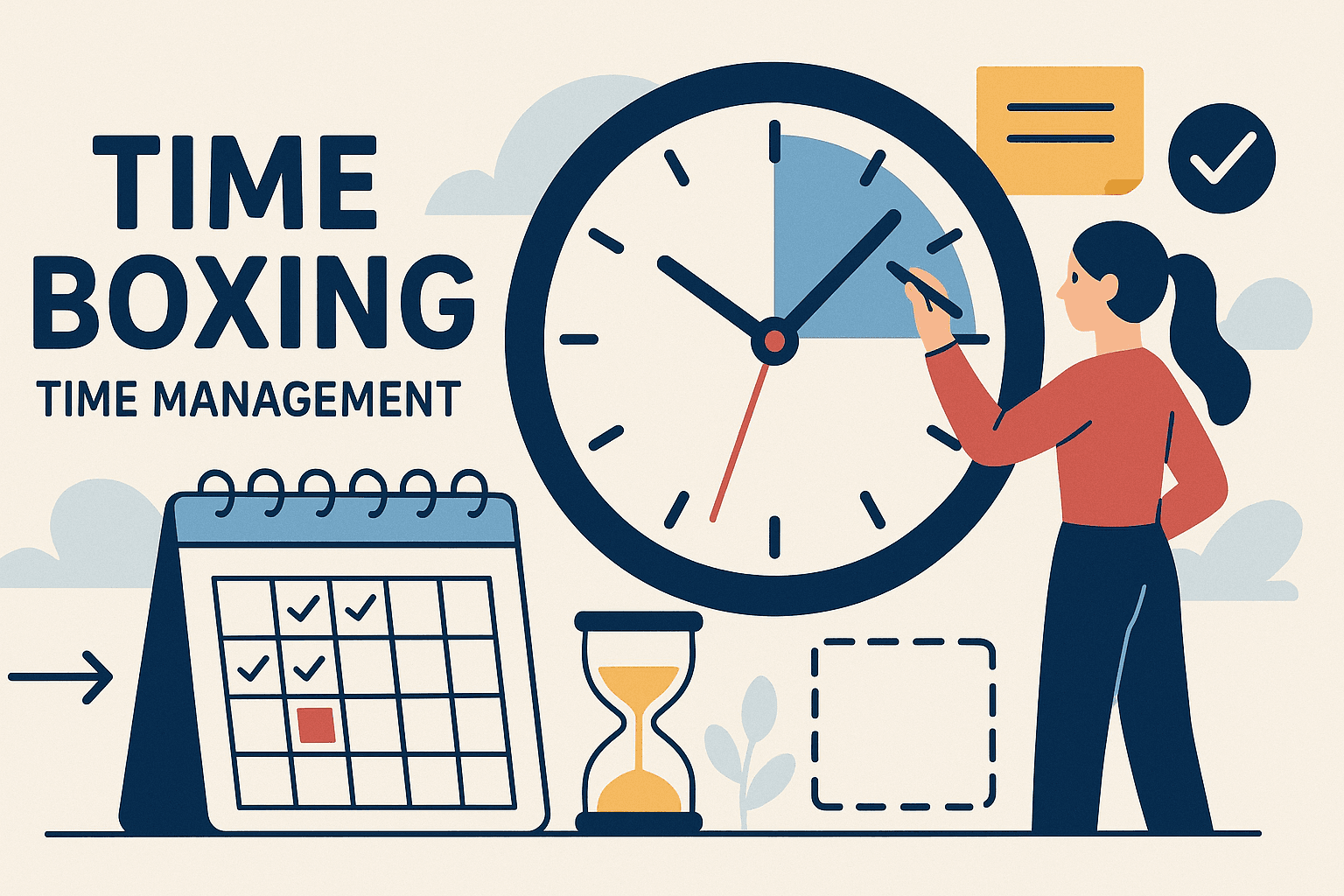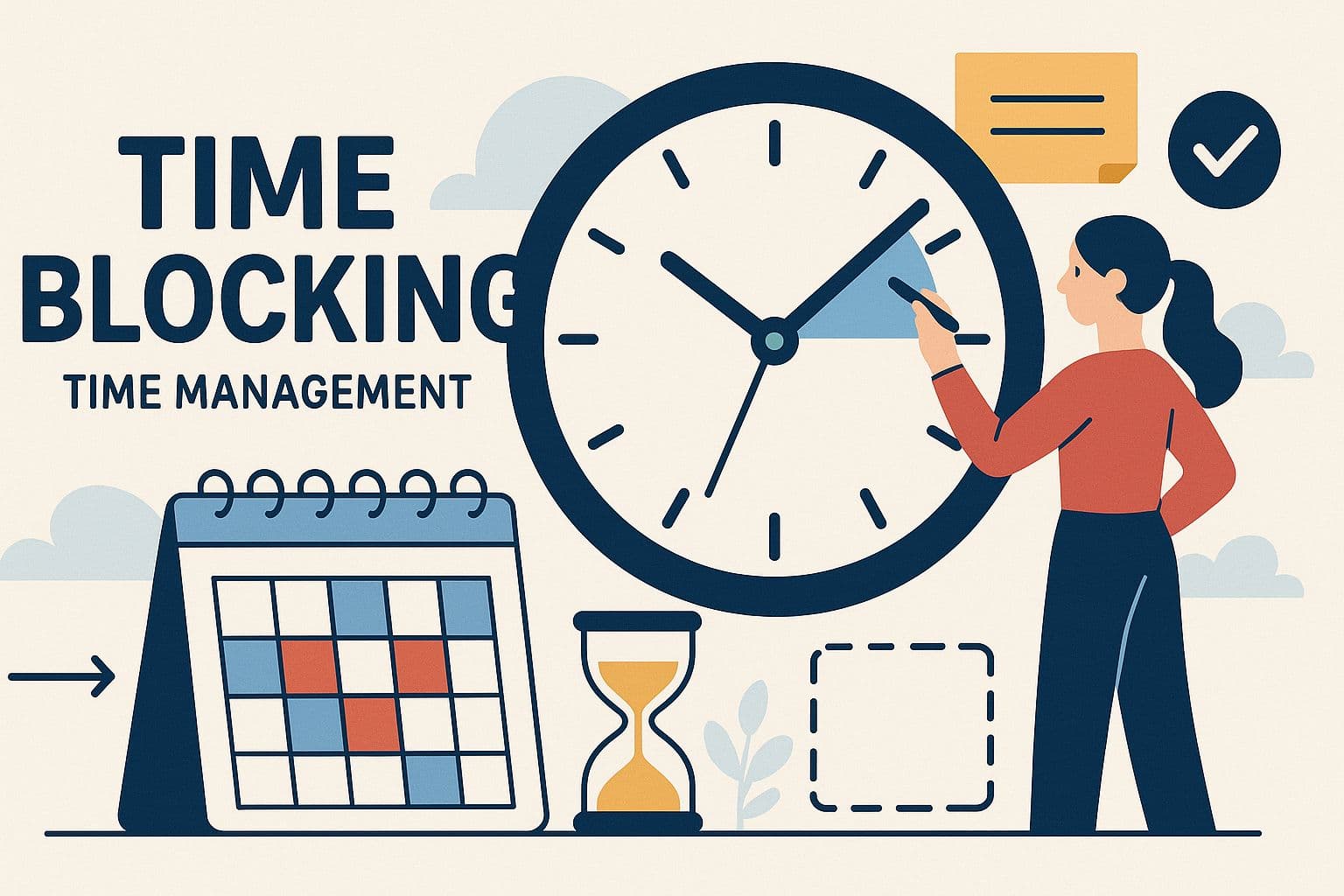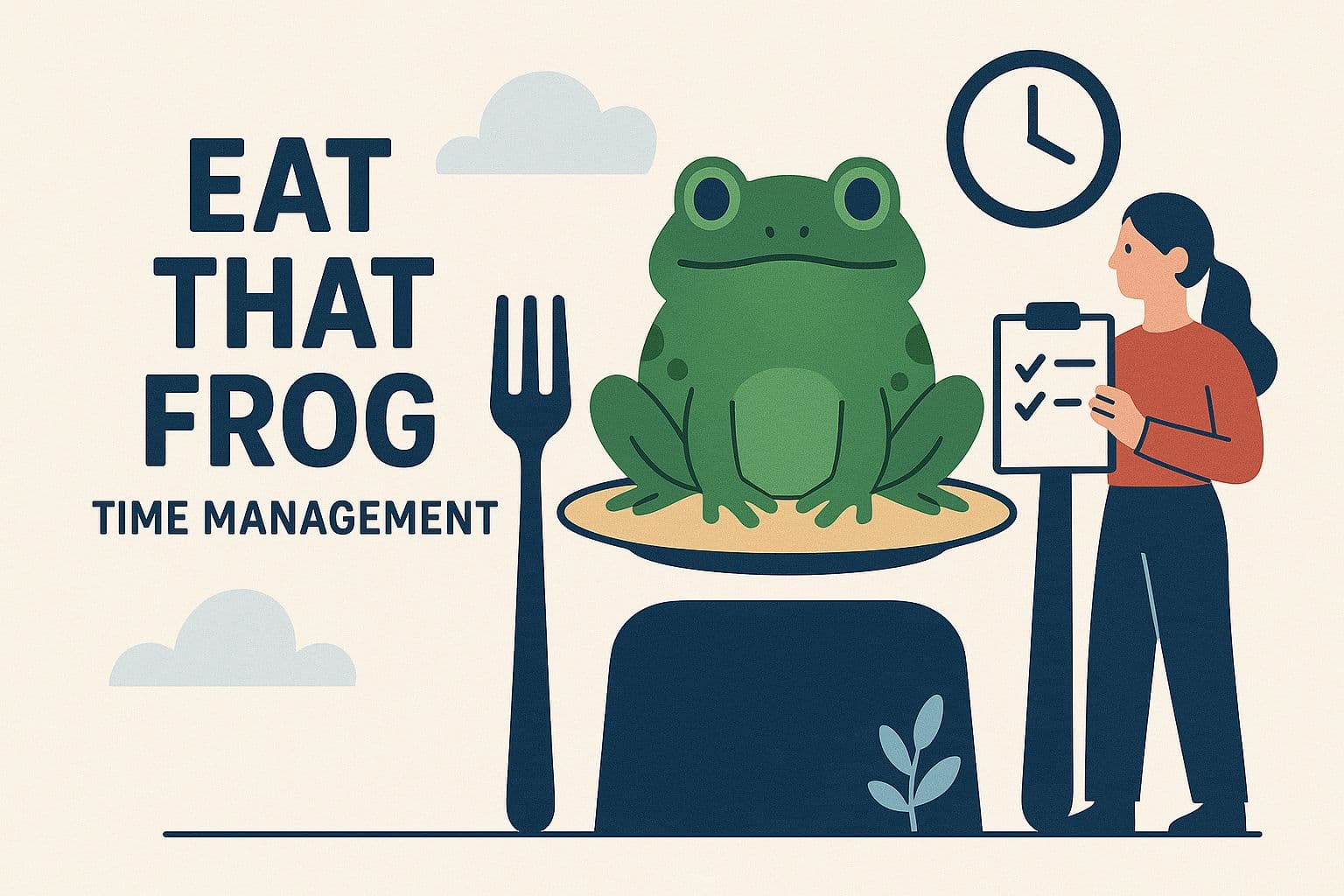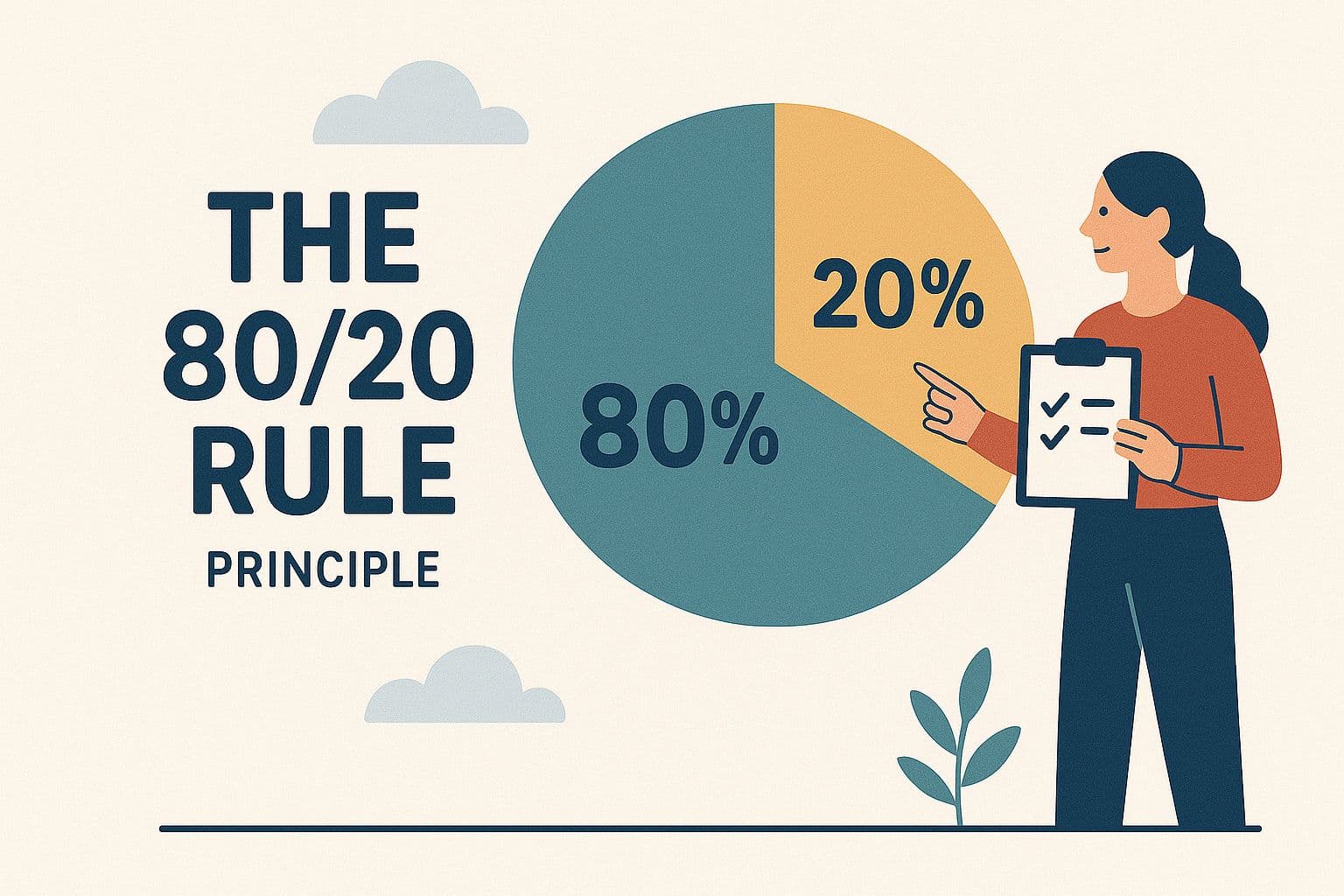Everybody reading this article can benefit from improving their time management skills, whether they're an entrepreneur, a captain of industry, or even a road sweeper. Everyone has important tasks they need to prioritize, and everyone needs to find the right work-life balance.
Being able to prioritize tasks through efficient time management to achieve a healthy work-life balance isn't just a matter of efficiency—your life can depend on it. Studies consistently show that those who aren't proficient at managing time are more likely to experience stress, which can lead to decreased quality of life and a reduced lifespan overall.
Look at the bigger picture beyond just your professional life, and consider how good time management techniques can improve your mental health and your personal life too. The good news is that there are many time management strategies you can implement today to ensure that your urgent tasks don't overwhelm you.
Improve your time management immediately with better scheduling
One of the main reasons time management becomes stressful is because we lose track of our important meetings and events, just as much as our routine daily tasks. Poor scheduling can affect your professional reputation and have a significant impact on your personal life, so make sure you're able to use your time more effectively by signing up with Calday.
Calday makes scheduling appointments, meetings, and other important events easy by organizing them all in one place. With just a few clicks, your contacts can sign up and/or invite you to meetings and get back to you about events in a timely manner, ensuring that you can better concentrate on unfinished tasks.
By using Calday, you'll never have to worry about managing your weekly schedule, as it integrates easily with major third-party apps like Google Calendar and Microsoft Teams. With a basic free plan that provides core functionality for everyone, and our premium plan which comes in at just $10 a month, Calday can help you manage your time spent without spending, so sign up today!
How we chose our top time management techniques
We wanted to take a broad view of the best time management styles as we believe it's important to balance both the personal and professional success arising from improved self-management. As such, we focused on the following key factors in finding the best time management techniques:
Practical application
We wanted time management styles that are proven to work and focused more on practical use than theory. That's because being able to achieve a balanced life while still tackling multiple tasks per day is beneficial for everyone.
Covering all key goal-setting challenges
Different time management styles are good at resolving different issues. Some are better at helping you organize tasks, others at eliminating procrastination. Using them all in harmony is the best way to manage time effectively and achieve the best results.
Simplicity of application
You're not going to achieve a better work-life balance if the right time management style for you is too difficult to apply. As such, we focused on finding techniques that are relatively simple to apply, whether you prefer structure or a freestyle approach.
Focusing on the bigger picture
Proper time management needs to be consistent and should provide you with the structured framework required to stay organized in the long term. That's why we chose time management styles that will help you eliminate distractions in a way that’s sustainable.
Time Boxing

Let's start out with something simple in the form of time boxing. This time management technique works just as you'd think it does; you allocate a fixed, predetermined amount of time to an activity and you commit to stopping once that time is up.
This technique allows you to set hard boundaries to help you meet deadlines, which should help you to stay focused on one task without any unnecessary distractions. The time duration of the box, whether it’s 10 minutes, an hour, or a week, is entirely up to you.
Of all the time management styles we'll review, this method is especially useful for perfectionists, procrastinators, or if you want to manage your time but feel overwhelmed by other tasks. It’s also a good option for those unable to delegate tasks as well.
Key benefits
Reduced procrastination
A fixed time limit lowers the psychological barrier to starting a task. This allows you to focus on creating high-quality work instead of getting distracted.
Cuts back on perfectionism
Time management techniques won't stop you from being a perfectionist, but this time-blocking method will help you to eliminate its negative effects.
Improves your focus
Instead of being overwhelmed by your task lists, you can focus on one specific task without unnecessary distractions.
Creates personal boundaries
Important tasks exist in every part of our lives and can interfere with one another. Time boxing sets boundaries so that interference is kept to a minimum.
How to apply
Set an honest limit
Your ability to prioritize tasks is predicated on being honest with yourself. Don't set a time-boxing window of 2 hours if you think it'll take longer, for example.
Minimize distractions
Get rid of anything that could distract you during this period. Block phone calls, avoid busy work hours, choose a quiet room to work in, etc.
Stop when your time's up
You can use time-tracking software here. Once you're done, you're done. Don't spend any more time on the task you were working on and rest.
Learn from your experience
Did you accomplish your task or did you need more time? If so, consider where you can make improvements and what time management tools you can add to improve the experience.
Time Blocking

Time blocking may sound like it's the same as time boxing; however, there are key differences between these time management styles that make it unique. This approach focuses on helping you divide your day into blocks of time and assign each block to a specific task or category of tasks, helping you effectively prioritize them.
As such, unlike time boxing, which focuses on limiting the duration of a task, time blocking is more about controlling when tasks happen. It gives structure to your day, allowing you to complete tasks with a minimum of interruption or distraction.
The great thing about the time blocking method is that you become able to enhance time management actively, rather than reactively. You choose the different tasks you want to focus on and make a decision to focus your time on them. Once your decision is made it’s set, and you can begin working.
Key benefits
Increased productivity
You hardly need sophisticated productivity analysis to realize that focusing on specific tasks helps you improve your time management. Less time wasted means more stuff done.
Reduced decision fatigue
One of the best ways to manage stress is to reduce the number of decisions you make, especially about high-priority tasks. Time blocking helps to do this by prioritizing your most important issues.
Helps you meet deadlines
By boosting your awareness of how much time you have each day to complete various tasks, based on the blocks you set up, you're better able to meet deadlines.
Better work-life balance
Your personal and professional spheres are equally important. Time blocking helps you achieve better work-life balance by allocating time for breaks, meals, exercise, family, and other factors.
How to apply
Audit your time
To start using time blocking, you need to first understand how you're spending time each day. Consider what your average task list looks like and what causes you to fail to meet deadlines.
Set priorities
Do you want to allocate more time to project management, or do you need to find more time for personal matters? Set your priorities accordingly and consider how you can work toward them.
Create a calendar
Stay organized by using a calendar app that highlights where time is blocked off. Make sure you are time tracking, and consider using color coding to differentiate blocks based on their purpose.
Protect your blocks
Treat your blocks as sacrosanct. Don't let anything distract you from them. This time management system only works if you protect your time blocks at all costs, whatever they're devoted to.
Eat That Frog

It's certainly an unusual name for a system that helps you with managing time, but the philosophy behind Eat That Frog is brilliantly simple. This methodology states that the first thing you should do each day is immediately tackle the most difficult, important, or otherwise unpleasant task that you have on your to-do list.
The name Eat That Frog is a reference to the great American novelist Mark Twain, who reputedly had the following to say about time management:
“If it’s your job to eat a frog, it’s best to do it first thing in the morning. And if it’s your job to eat two frogs, eat the biggest one first.”
We're fond of this technique as it's one of those time management tips that keeps things simple. All you need to do is identify tasks that you dread and just focus on getting them quickly out of the way.
Key benefits
Reduces procrastination
We're most likely to procrastinate over things we don't want to do, even if they're high-priority tasks. Eat That Frog helps ensure that you minimize procrastination's impact by eliminating the tasks most likely to cause them.
Boosts motivation
Getting something important and unpleasant out of the way first helps your mental health and motivation, as you can spend the rest of your day focusing on less taxing tasks.
Improves decision-making
Business leaders in the loop about organizations staying organized know that making good decisions is an iterative process. Prioritizing what's important with this technique helps youtube build your decision making performance via consistent action.
Builds momentum
Once your main challenge is tackled you can focus on being able to push specific tasks that would otherwise clutter your schedule, building momentum for a more productive day.
How to apply
Identify the frog
At the end of your day, identify what the frog you need to eat tomorrow is going to be, and consider how you're going to eat it.
Make it your priority
If you know your frog, then eating it is your first priority. Don’t get bogged down in any other immediate tasks you have—focus on eating the frog effectively.
Plan how to eat your frog
You need to plan how to manage your time while eating the frog. You can either eat it in one go or break it up into chunks—either way is valid under this time management philosophy.
Reward yourself afterwards
Managing time requires you to be realistic, and part of that is incentivizing yourself with rewards. After you finish eating your frog, reward yourself with something enjoyable—don’t immediately go back to your to-do list.
The 80/20 rule

The 80/20 time management rule states that roughly 80% of results in one's professional life come from 20% of efforts. Coined by Italian economist Vilfredo Pareto in the early 1900s (hence why it's also known as the Pareto Principle), the principle can be applied toward achieving personal and professional success alike.
The trick to using the 80/20 rule for time management is to identify which tasks, clients, products, or habits yield the greatest results. Once you've done that, you need to work out which activities cause you to waste time.
The idea is to spend more time on the critical few activities that deliver the most results and less time on the trivial ones, ie, to work smarter rather than harder. Instead of being merely busy, you work toward and achieve smart goals by being more efficient, as you're better able to eliminate distractions.
Key benefits
Maximised productivity
As the emphasis of the 80/20 rule is on working smarter, not harder, by focusing on key tasks that produce the best results, your productivity is significantly improved.
Improved decision-making
Out of all the different time management styles we've reviewed, this one is perhaps the most effective at helping you improve your decision-making.
Cuts down on unnecessary tasks
The 80/20 rule helps you complete tasks that produce the best results. During this process, you'll quickly realize which tasks are unnecessary, allowing you to eliminate them.
Boosted clarity
Feel overwhelmed with similar tasks? Unsure which ones to focus on? By concentrating on the tasks that produce the best results, you'll also be able to enjoy more clarity about your work overall.
How to apply
Identify your key tasks
Review your work from the past week or month. Which 20% of tasks produced 80% of your results? These are your priority activities.
Delegate or eliminate the 80%
Look at the remaining 80% of tasks that took up time but produced little value. Track tasks like these, and either delegate or eliminate them.
Focus on the 20%
Complete the tasks that fall under the 20%. Give them your full attention and don't get distracted. Consider using the time boxing and time blocking time management styles.
Review and refine
Your high-impact 20% may shift over time. Schedule regular check-ins (weekly or monthly) to reevaluate and adjust your time management plan in response.
The Two Minute Rule

Our final time management system is the Two-Minute Rule, and it's particularly useful for those who feel swamped with lots of small but important tasks. This method was popularized by David Allen in his book Getting Things Done, in which he writes:
If a task will take two minutes or less to complete, do it right away.
The Two Minute Rule is all about making sure your time management is rooted in efficiency. We naturally want to process small tasks on our own time, rather than dealing with them immediately, but that can lead to us not dealing with them in a timely fashion.
Instead, the Two Minute Rule makes us deal with whatever is in front of us head one. When Allen's book was published, people realized that this method created significantly more efficiency for them, and that's why it became such a popular time management system.
Key benefits
Reduced to-do list
The Two-Minute Rule is excellent at clearing up the list of tasks you need to focus on each day. If you want time management for more personal matters, this is a great system.
Clears mental clutter
Your mental health is important, and one of the worst things you can do to it is maintain a long list of outstanding tasks. Clear the backlog with this time management system.
Increased momentum
Eliminating one task and quickly doing the same again as part of a process helps build your momentum. This increases your productivity and improves your overall time management.
Improved efficiency
Minimizing the time you spend organizing, tracking, or revisiting tasks that take very little time to do significantly improves your overall efficiency.
How to apply
Evaluate tasks immediately
When a new task comes your way—whether through an email, a meeting, or a quick thought—ask: Will this take two minutes or less? Remember; your time management projection has to be accurate, so be honest with yourself.
If yes, do it
Don’t write it down, don’t postpone it—just do it. The act of completing it right away is faster than scheduling it, after all.
If no, defer it
For anything that takes longer, you need to decide whether to delegate it, add it to a to-do list, or schedule time for it later in the day or week.
Adopt it as a mindset
The trick to this time management system is that it needs to become a part of your mindset in the long term. Always consider the Two-Minute Rule for every task that comes up.
Summary
Don't pick and choose between these different time management styles—the best way to use them is in combination for different reasons and circumstances. If you use them like this, in balance, you'll see immediate results in your personal and professional lives.
Remember, good time management requires you to know when and where your various meetings, appointments, etc., are taking place. To do that, you need a high-quality scheduling tool like Calday. Create an account today, and you'll quickly realize how good life can be when you take the stress out of scheduling.





